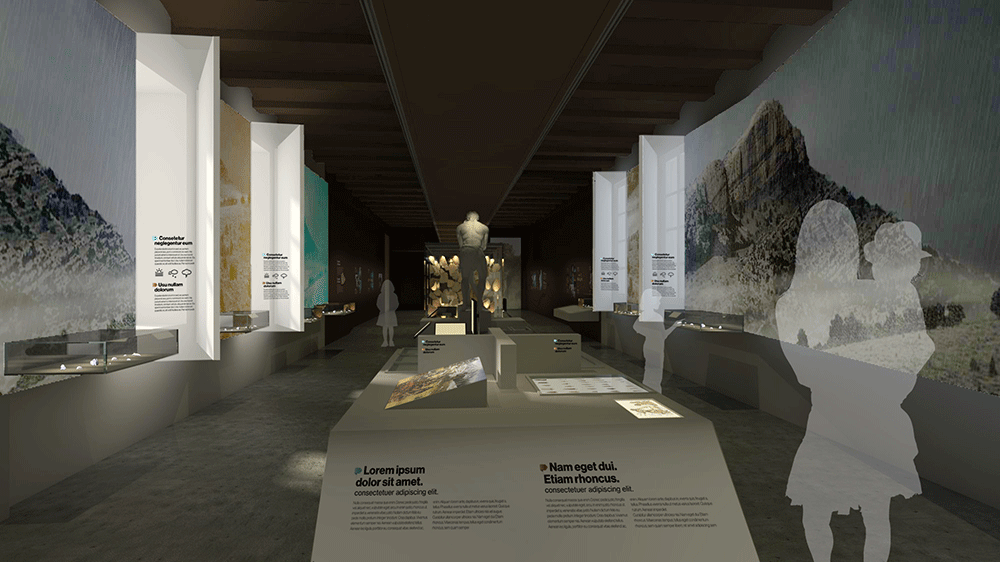This museum curation project had to adapt the permanent collection on Prehistoric Societies, specifically on hunter-gatherer societies, at the Prehistory Museum of Valencia. Since it was created in 1927, this museum has collected, studied and disseminated archaeological heritage in Valencia. The museum is home to the most important collection on prehistoric societies in Spain, mainly from excavations conducted by the Prehistory Research Service (Servicio de Investigación Prehistórica – SIP). The hall, inaugurated in 1995, needed to be updated and reconditioned to present the museum archives with the proper scientific rigour, modernity and educational and communicational capabilities.
We understood the museum as a space where visitors interact with the collections, aiming for comfort and creating spaces where people can rest and meet up throughout the museum. It is also a place for debate, where visitors are confronted with dilemmas not only of the past but also the present, through history. It is a question of creating effective communication that is interactive, not just transmissive. The challenge of remodelling these halls lies in evolving from an informative museum to a communicative museum, from a museum that displays objects to one that explains things that are significant to visitors, essentially based on objects. The archaeological ruins, the means for transmitting ideas, become the main point of attraction and raise awareness of the value of the museum’s tradition of research.
We propose a visit in three acts. First, “Archaeology speaks about us”, is a space that draws visitors in, a preface, a gateway to the world of archaeology based on the plethora of settlements found in Valencia and the work the museum and the SIC have done over the years to preserve and study them. It is a dark, enveloping space, of light and shadows, a place that has been excavated, sculpted from texts, images, interactive maps and display cases. The route leads to a second room, bright and open.
The second act, “The Passing of Time, the Ways of Life”, is in a large, open space that showcases the Palaeolithic Hall in all its width and length. The entrance puts us on the perspective axis of the hall, showing the symmetrical structure of the space, created by the thematic relationship between the side walls and the central structure, and the great sequential narrative structure of the visit.
Presiding over the end of the hall, the third and final act is devoted to “The Symbolic World” and focuses on a large display case with tablets from Parpalló Cave, limestone carved and painted, sometimes on both sides. These tablets, thrown into the cave as part of a ritual, are the climax of the visit. The device to present the tablets recreates the horizontal stratification of the site in a new, vertical stratification with mirrors laid out in the direction of the visit so visitors can read both sides.




